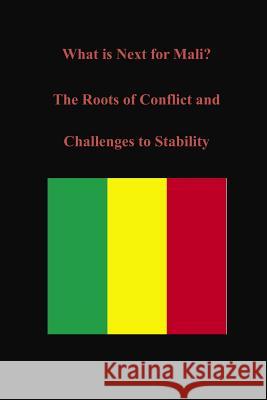What is Next for Mali? The Roots of Conflict and Challenges to Stability » książka
What is Next for Mali? The Roots of Conflict and Challenges to Stability
ISBN-13: 9781497595538 / Angielski / Miękka / 2014 / 88 str.
In March 2012, the government of Mali, one of the most touted symbols of Africa's democratic potential fell in a military-executed coup. At the same time, a 4-decade-old rebellion among Tuaregs seeking autonomy or independence reached new heights, fueled by weapons from Muammar Gadaffi's fallen government and perhaps the belief that the Arab Spring could extend to northern Mali. Al-Qaeda in the Islamic Maghreb (AQIM) and their allies were quick to capitalize on the increasing chaos in a territory characterized by lack of government control and poverty and seized the major cities in the north. The imposition of a severe form of Islamic law and a growing food crisis sent the population fleeing south across Mali's international borders. The French-led military intervention, Operation SERVAL, ousted the militants from the main cities in the north, but did not address the crisis' underlying issues including the grievances that feed the Tuareg nationalist movement, the establishment of a civilianled government in Mali, and the near- and long-term threats to food security. The eruption of this crisis also demands a critical look at the Sahel's regional security framework, and the U.S. role in it. In Part I, Background to the Crisis, the author explores the deeper background to the crisis and sets it within Mali's historical and geographical context. Though it was a major world power in the Middle Ages the former Malian Empire had long lost its economic strength by the time the European countries colonized Africa. To control their territory, the French used military means to try to bring the pastoralists in the Sahel, such as the Tuareg, under control. Independent since 1960, Mali struggled to develop political institutions and achieve economic growth. After years of dictatorial rule, Mali transitioned to democracy in 1992. Despite considerable economic aid from the United States, it remained one of the poorest countries in the region. Indeed, the neighborhood, the Sahel zone that runs east to west through the continent, is a zone of poor, ungoverned spaces, sometimes referred to as the "arc of instability." In Part II: The Crisis Unfolds, the author examines the recent events that created the volatile conditions leading to the crisis. The Tuareg nationalist movement has existed for over 40 years; there have been at least four periods of rebellion, and military force has been the primary response from the central government. Gadaffi had long been a supporter of the Tuareg, employing them in trusted positions within his military. The fall of his regime sent many Tuaregs home, laden with heavy weaponry, escalating the rebellion to new heights. Due to a steady expansion into the Sahel zone over the last decade, AQIM was well poised to capitalize on the anarchy and seize the north's major cities. The fall of Gao, Timbuktu, and Kidal to AQIM illustrates the need for a critical examination of the U.S.- led regional security framework, which is the focus of Part III: The Regional Security Framework in the Sahel. Numerous factors hindered the effectiveness of this framework, including the newness of the military partnerships with regional governments, their differing strategic level interests, and the wide range of capabilities among their armed forces. Building partner counterterrorism capability to meet the transnational al-Qaeda threat was the primary focus of the security framework through programs such as the Pan Sahel Initiative (PSI) and the Trans Sahel Counter Terrorism Partnership (TSCTP). However, it was ill-prepared for a complex crisis that included a largely secular nationalist rebellion, the overthrow of a civilian government by U.S.-trained soldiers, and a large-scale humanitarian crisis.
Zawartość książki może nie spełniać oczekiwań – reklamacje nie obejmują treści, która mogła nie być redakcyjnie ani merytorycznie opracowana.











